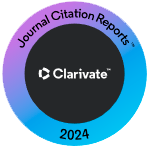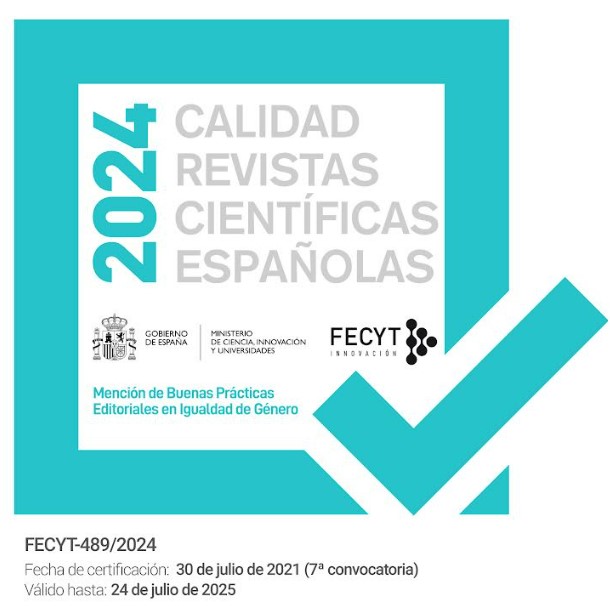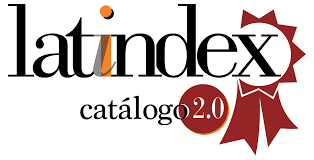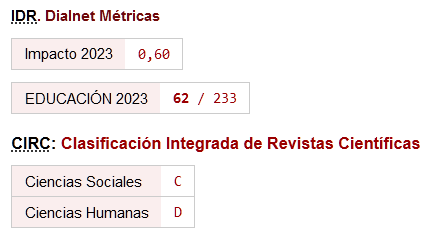Whatsapp and Formulating Guidelines on Network Interaction during the Learning Process in the University Classroom
Keywords:
Interaction, academic performance, whatsapp.Abstract
This paper exhibits the preliminary results of a study, which aims to formulate theoretical and methodological guidelines for the configuration of network learning environments in university classrooms. Particularly, results about interaction levels and the correlation with the academic performance, at the postgraduate course of the Cooperative University of Colombia, integrated by 27 participants. The study has a varied approach, applied type, and descriptive scope. A face-to-face learning environment was designed that encourages interaction; One of the activities was in groups of 4 or 5 people, in which roles were assigned and WhatsApp was used as a communication platform . Through categories, an analysis of the content of the messages issued in WhatsApp groups was carried out, which allowed one to measure the interaction frequency and quality in a learning environment, and correlate it with academic performance. The results point towards two important considerations: i ) although there is an important correlation between interaction and academic performance, there is nothing conclusive about it, and ii) the correlation between academic performance and interaction is higher when it is calculated based on the participation frequency, than strictly the quality.
Downloads
References
Bandura, A. (1971) Social Learning Theory. New York City: General Learning Press.
Buxarrais, M. (1989). Análisis de la interacción profesor-alumno como catalizadora del proceso de aprendizaje. Revista de educación. (288) 419 - 428. Recuperado de: https://www.mecd.gob.es/dctm/revista-de-educacion/articulosre288/re28819.pdf?documentId=0901e72b813ca2a6.
Castells, M. (2009). Comunicación y poder. (Traducción de María Hernández, 2009) Madrid, España: Alianza editorial.
Deutsch, M. (1949). A Theory of co-operation and competition. Social Science Collections. Recuperado de: https://app.luminpdf.com/viewer/k4HnXbCfgQ2eT28T3
Driessnack, M., Sousa, V. & Costa, I. (2007). Revisión de los diseños de investigaciones relevantes para la enfermería: Parte 3: Métodos mixtos y múltiples. Revista Latino-americana de Enfermagem (5) 1 - 4. Recuperado de: http://www.scielo.br/pdf/rlae/v15n5/es_v15n5a24.pdf.
Enkin, E. & Mejías-Bikandi Errapel (2017). The effectiveness of online teaching in anadvanced Spanish language course. International Journal of Applied Linguistics. (27) 176 – 197.
García, A. & Suárez, C. (2009). Interacción virtual y aprendizaje cooperativo. Un estudio cualitativo. Revista de educación (354) 473-498. Recuperado de: http://www.revistaeducacion.mec.es/re354/re354_19.pdf.
García, B., Márquez, L., Bustos, A., Miranda, G. & Espíndola, S. (2008). Análisis de los patrones de interacción y construcción del conocimiento en ambientes de aprendizaje en línea: una estrategia metodológica. Revista electrónica de investigación educativa (10), 1-18. Recuperado de http://www.scielo.org.mx/scielo.php?script=sci_arttext&pid=S1607-40412008000100003&lng=es&tlng=es
Garrison, D. & Cleveland, M. (2005). Facilitating Cognitive Presence in Online Learning: Interaction Is Not Enough. The american journal of distance education (3) 133 - 148. Recuperado de: http://www.anitacrawley.net/Articles/GarrisonClevelandInnes2005.pdf
Gunawardena, C. (1995). Social Presence Theory and Implications for Interaction and Collaborative Learning in Computer Conferences. International Jl. of Educational Telecommunications (1) 147-166. Recuperado de : https://www.learntechlib.org/p/15156
Johnson, D., Johnson, R. & Smith, K. (1997) El Aprendizaje Cooperativo regresa a la Universidad: ¿qué evidencia existe de que funciona? Recuperado de: http://www.javeriana.edu.co/prin/sites/default/files/Johnson_Aprendizaje_cooperativo_en_la_universidad.pdf
Moore, M. (1989) Editorial: Three types of interaction. The American Journal of Distance Education (3), 1-17.
Moore, M. & Anderson, W. (2003). Handbook of Distance Education. Mahwah, NJ: Lawrence Erlbaum Associates. Recuperado de: http://ltc-ead.nutes.ufrj.br/constructore/objetos/Handbook_Of_Distance_Education.pdf
Rafaeli, S. (1988). Interactivity: From new media to communication. En Hawkins, R., Wiemann, J., & Pingree, S. Advancing communication science: merging mass and interpersonal processes. California: Sage publications. 110-13
Rodriguez, D., García D. & Rubia, D. (2017). Análisis de las interacciones en entornos comunicativos de aprendizaje. Estudio de un grupo de escolares 4º curso de Educación Primaria. Revista Nacional e Internacional de Educación Inclusiva. (10) 161-180. Recuperado de: http://revistaeducacioninclusiva.es/index.php/REI/article/view/304/292.
Rodriguez, R. (2017). Una experiencia de interacción crítica y reflexiva a propósito de una campaña sobre Twitter en la asignatura de Teoría del Derecho. International Journal of Educational Research and Innovation - IJIERI. (7) 186 – 201.Recuperado de: https://www.upo.es/revistas/index.php/IJERI/article/view/2324/1889.
Salinas, J. (2004). Innovación docente y uso de las TIC en la enseñanza universitaria. Revista universidad y sociedad del conocimiento. (1). Recuperado de: https://www.uoc.edu/rusc/dt/esp/salinas1104.pdf.
Siemens, J. (2004) Conectivismo: Una teoría de aprendizaje para la era digital. (Traducción de Diego Leal, 2009). Recuperado de: http://clasicas.filos.unam.mx/files/2014/03/Conectivismo.pdf.
Vigotsky, L. (1978). El desarrollo de los procesos psicológicos superiores (Traducción de Silvia Furió, Ed. 2009). Barcelona, España: Crítica.
Woods, R. & Baker, J. (2004). Interaction and Immediacy in Online Learning. International Review of Research in Open and Distance Learning (5) 1-13. Recuperado de: http://www.irrodl.org/index.php/irrodl/article/view/186/268.
Zambrano, W., Medina, V. & García, V. (2010). Nuevo rol del profesor y el estudiante en la educación virtual. Dialéctica revista de investigación. (26) 51 - 61. Recuperado de: https://dialnet.unirioja.es/servlet/articulo?codigo=3340102












